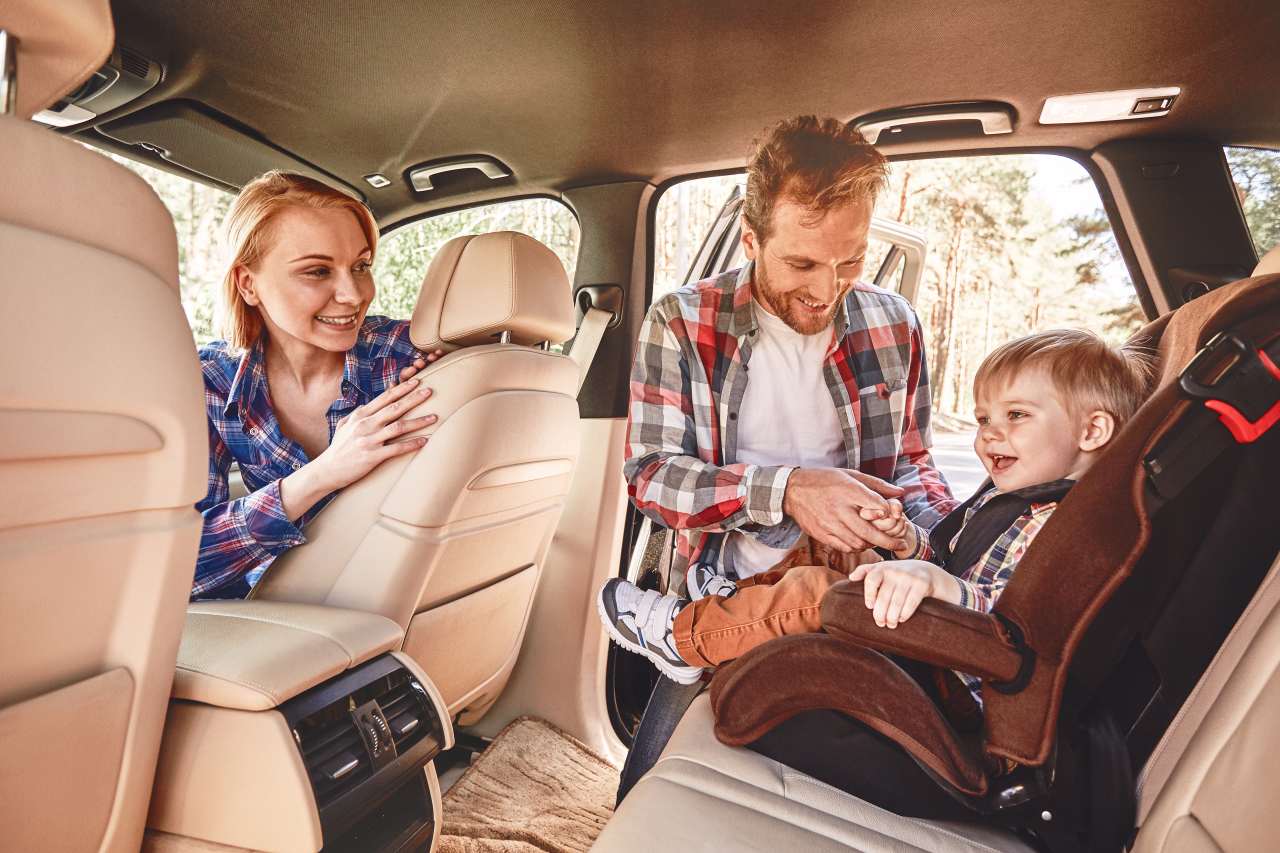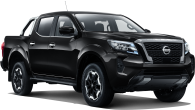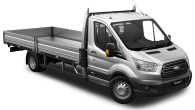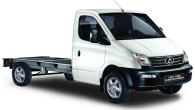BT-50: all new with Isuzu
The Australian launch of the latest generation BT-50 in June 2020 heralded a significant change for Mazda’s ute, as it was the first to ‘platform share’ with Japanese commercial vehicle giant Isuzu after previous pairings with Ford’s Ranger.
The current BT-50 was embedded in the design and development of the latest generation of Isuzu’s popular D-Max right from the start. As a result, the latest D-Max and BT-50 are twins in all but appearance, with major technical differences being exterior and interior styling.
In that context, the BT-50 succeeds in looking substantially different to its Isuzu sibling thanks to Mazda’s signature ‘Kodo’ design language, which also provides a strong visual link with the marque’s popular CX range of SUVs.

As a result, my family of five which comprises me, my wife, teenage son and daughter (well, the son recently turned 20) and our pet Boxer, was keen to get aboard one of the new-look BT-50s for a six-month loan, to see how it performed in the dual roles of weekday worker and weekend fun machine over a more relevant extended period.
In response, Mazda Australia’s head office in Melbourne made available a Gun Blue 4x4 BT-50 dual cab ute in XTR model grade for this mission, armed with a 3.0-litre four-cylinder turbo-diesel and six-speed automatic.

The XTR is a strong seller because it hits what you might call a ‘sweet spot’ in the BT-50 range in terms of equipment, features and pricing between the work-focused XT and XS models and higher-grade GT, SP and premium Thunder offerings. It also shares the benchmark five-star ANCAP safety of its D-Max donor.
Highlights in addition to the XT include 18-inch alloy wheels, body-coloured power-folding door mirrors and LED headlights/daytime running lights/front fog lights. Advanced keyless entry accesses a smart cabin with dual-zone climate control (including rear passenger vents), a leather-wrapped steering wheel and gear-knob, auto-dimming interior mirror and rear seat fold-down centre armrest. List price for our test vehicle is $57,310 plus ORCs.
Behind the wheel
During our first month of ‘ownership’ the BT-50 has proven to be a comfortable and competent daily driver, serving in the routine family roles of weekly grocery shops, school and sport drop-offs and pickups, a run to the local waste recycling centre and carting home some Ikea flat-pack furniture.
The BT-50 feels like it has solid build quality, which is not surprising given its Isuzu origins. In city and suburban driving, it’s pleasantly quiet with low engine and tyre noise. All-round vision is also good, thanks in no small part to decent-sized door mirrors with blind-spot monitoring and a reversing camera. My wife also finds it easy to drive and just as importantly park, given the shopping centre bays she regularly needs to access.
It’s not hard for people of different lengths and widths to find a comfortable driving position, assisted by a height-and-reach adjustable steering wheel with leather rim that feels nice in your hands and a left footrest which provides good support.

The driver’s seat does not have adjustable lumbar support and there’s no rake adjustment for the base cushion either; two functions that would be welcome at this model grade. Even so, the XTR’s fixed settings seem to be an acceptable compromise so far, given that my wife and I can each drive the BT-50 in comfort even though she’s a petite 166cm and I’m more than 20cm taller – and much heavier!
There are entry-assist handles on the A and B pillars and the rear seat is surprisingly spacious, given that I have sufficient knee-room if sitting behind the driver’s seat when it’s in my position. My tall adult kids (sounds like a contradiction I know, but they’re over 18!) appreciate the space along with the rear a/c vents and fold-down centre armrest with cup holders. However, there’s only one USB port (two would be ideal) so some sharing is required when using their devices on longer journeys.
All driver controls are easy to see, reach and operate. However, given that the BT-50’s interior is largely shared with the D-Max, it has the same annoying glitch in the design of the driver’s sun-visor which clips the edge of the rear-view mirror enough to dislodge it each time the visor is folded down. We would also prefer a traditional volume control dial/knob for the infotainment system rather than the relatively slow response of push-buttons.

Steering feel is amongst the best in class and braking is also reassuringly strong, particularly with a heavy payload on board. The handling is sure-footed and predictable for a high-riding 4x4, when driven at sensible speeds of course.
The 3.0-litre four-cylinder turbo-diesel, with figures of 140kW and 450Nm, provides spirited acceleration from a standing start. It never feels sluggish in city and suburban driving, thanks largely to its generous torque being available across a broad band between 1600-2600rpm where most of this driving occurs. The engine is at its best in this zone, as it can get quite noisy at higher rpm and there's nothing to be gained in performance beyond 3500rpm anyway.
The smooth-shifting Aisin six-speed torque converter automatic offers the choice of sequential manual-shifting which is great when hauling and/or towing heavy loads, particularly in hilly terrain to avoid hunting between gears. It also has intelligent shift protocols that trigger automatic downshifts (much appreciated on steep descents) to assist with engine-braking.

The XTR is a comfortable highway cruiser too, given that the cabin feels well insulated from engine, tyre and wind noise. With overdrive on the top two gear ratios the engine fairly loafs along at these speeds, requiring only 1500rpm to maintain 100km/h and 1600rpm at 110km/h using the adaptive cruise control.
When we collected the XTR from Mazda, the unladen ride felt too firm and jiggly over bumps, particularly in the rear suspension. So, during my first under-bonnet and tyre pressure checks, I discovered that the tyres were inflated to pressures close to the 300kpa settings recommended only when hauling heavy loads. Our XTR may well have done so before we got the keys.
Not surprisingly, when I dropped them to the 230kpa settings specified for unladen travel, the ride was softer and there was a noticeable improvement in comfort. This is a good example of why I’m a stickler for maintaining correct tyre pressures, as over-inflation when unladen can have a big effect on ride quality, particularly in a 4x4 ute.
One-tonne-plus payload
The XTR has a healthy 1070kg payload rating which makes it a genuine ‘one tonner’ in local lingo. That’s a handy figure for a multitude of tasks and something we wanted to test early on.
We strapped 950kg into the load tub, which with driver equalled 1050kg which was just below the 1070kg limit. In response, the nose rose 15mm and the leaf-spring rear suspension compressed a substantial 75mm.
Even so, it still had more than 30mm of stationary bump-stop clearance in the rear, which was ample to avoid any bottoming-out when driving. It floated over large bumps and dips with ease and maintained its sure-footed poise when cornering and braking on sealed and unsealed roads.
It also scoffed at our 13 per cent gradient, 2.0km-long set climb at 60km/h, using third gear and maximum torque at 2200rpm to easily haul this load to the summit. Engine-braking on the way down was also commendable, given the substantial weight it had to restrain.
In a nutshell, the latest BT-50 is more than capable of hauling a one-tonne-plus payload. We’ll test its 3500kg braked tow rating in a later chapter.
Fuel consumption
The XTR’s odometer was reading 1667km when we collected it from Mazda in early August. During our first month on the road, we’ve added 1182km comprising a mix of city, suburban, highway and dirt-road driving. And just under 200km of that was hauling its peak payload.
We covered 569km on our first tank, which was a cautious start given there was more than 18 litres of diesel (or almost 200km of range as shown on the dash display) remaining in the 76-litre tank when we stopped to refuel. The dash was claiming average consumption of 10.2L/100km, which was identical to our own figure calculated from fuel bowser and tripmeter readings.

We went further on the second tank, covering 614km with average consumption dropping to 9.0L/100km based on our numbers. This was no doubt due to lots of highway and backroad travel, which compared favourably with Mazda’s official combined figure of 8.0L/100km. Fact is, any 4x4 dual-cab ute weighing more than two tonnes that can achieve single-digit economy in 'real world' driving gets a big tick from us.
So, it will be interesting to monitor the XTR’s consumption in following chapters given that (from our experience at least) its Isuzu-sourced turbo-diesel maintains consistent low-10s in regular city and suburban use, but readily drops into single figures during sustained highway driving.
The road ahead

We’ve got lots of activities planned for our long-term tester including off-roading, caravan-towing and more. We’re also planning to enhance the XTR’s versatility and appearance by installing several hand-picked items from Mazda’s genuine accessories range, so keep an eye out for those upgrades too in the coming months.
Acquired: August 2022
Distance travelled this month: 1182km
Odometer: 2849km
Average fuel consumption (at pump): 9.6L/100km
Mazda BT-50 2023: XTR (4X4)
| Engine Type | Diesel Turbo 4, 3.0L |
|---|---|
| Fuel Type | Diesel |
| Fuel Efficiency | 8.0L/100km (combined) |
| Seating | 5 |
| Price From | $48,180 - $55,440 |
| Safety Rating |
|
Pricing Guides

Range and Specs
| Vehicle | Specs | Price* |
|---|---|---|
| GT (4X4) | 3.0L, Diesel, 6 SPEED AUTOMATIC | $47,190 - $54,890 |
| XS (4X2) | 1.9L, Diesel, 6 SPEED AUTOMATIC | $37,510 - $44,110 |
| XS (4X4) | 1.9L, Diesel, 6 SPEED AUTOMATIC | $43,670 - $50,820 |


.jpg)



























.jpg)


.jpg)

